If you’re visiting Tokyo and looking for a meaningful, creative activity that offers a glimpse into Japan’s centuries-old craftsmanship, the Kintsugi Art Repair Workshop is a fantastic choice. Located conveniently just 15 minutes by subway from Asakusa, this 1.5-hour session costs about $156 per person and promises not just a fun craft, but a deeper understanding of Japanese aesthetics and philosophy. Guided by friendly, English-speaking instructors—often including dedicated professionals like Hijiri—you’ll learn to repair a ceramic piece with gold, turning a cracked vessel into a piece of art.
What we love most about this experience is how accessible it is for travelers with tight schedules—most sessions last around 90 minutes, making it easy to slot into a busy day. Plus, the workshop provides all materials, so no need to worry about bringing your own broken pottery or supplies. The chance to walk away with a handmade souvenir—your own repaired piece—is a real highlight, transforming a simple activity into a memorable keepsake.
One potential consideration is that if you bring your own vessel with substantial cracks or chips, it might not be fully repaired within the given time. But even then, the process of observing and participating in each step offers plenty of insight into this delicate art form. This workshop is best suited for curious travelers over 13 who want a hands-on cultural activity that’s both educational and highly Instagrammable.
Key Points

- Hands-on learning of traditional Kintsugi techniques with all materials provided
- English guidance ensures clear instruction, even for beginners
- Convenient duration fits into busy sightseeing schedules
- Authentic craftsmanship with the opportunity to take home a unique piece
- Accessible location near Asakusa and central Tokyo
- Suitable for ages 13 and above with ceramic vessels up to 15cm
What is Kintsugi and Why It Matters

The art of Kintsugi—literally “golden joinery”—is one of Japan’s most poetic crafts. Instead of discarding broken pottery, Japanese artisans repair it with lacquer mixed with gold, silver, or platinum, emphasizing the cracks as part of the piece’s story. It’s a philosophy that values imperfection, resilience, and beauty in repair—an approach that resonates beyond ceramics into everyday life.
In the workshop, you’ll learn the significance of this technique firsthand. One review notes, “You learn the history and techniques by actually doing them,” which elevates it from a simple craft class to a cultural lesson steeped in Japanese values.
While in Tokyo, here are other experiences we've covered
The Itinerary: What to Expect During the Workshop

The experience begins at the Nihonbashi Mutoh Main Store, where you’ll meet your instructor and fellow participants. The small group size—we’ve seen reviews mentioning groups of just three—creates an intimate, supportive environment.
First, you’ll observe how cracks are cleaned and prepared, gaining insight into the traditional process. Then, with guidance, you’ll carefully adhere broken pieces together using special glue, filling larger chips with clay if needed. The instructor might show you how to sand the repaired areas for a smooth finish.
Finally, the most recognizable step: applying the gold lacquer along the cracks, transforming imperfections into a feature. The final product is left to cure, but you’ll leave with your repaired piece in hand—ready to display or use decoratively. Some reviews highlight the satisfaction of making two pieces and watching them come together as “a very fulfilling experience.”
All Materials and Guidance Included
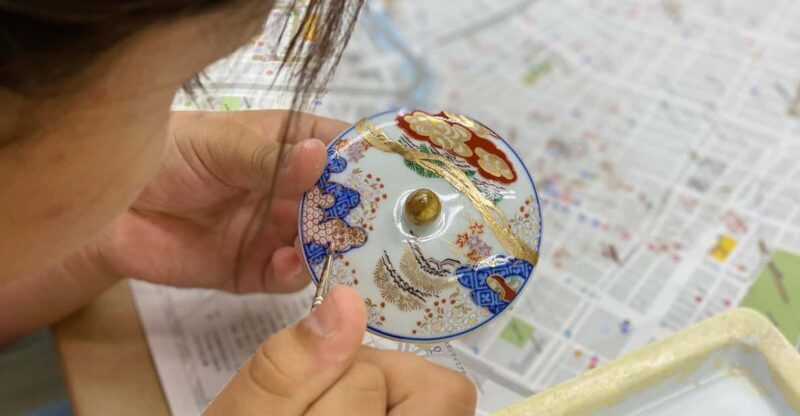
One of the workshop’s best features is that all materials are provided—no need to bring your own ceramics or tools. Whether you’re repairing a treasured family heirloom or just a simple ceramic bowl, the size is limited to about 15cm in height and diameter, suitable for most small to medium objects.
Guided by professional instructors with fluent English, you’ll get clear, step-by-step instructions. Many reviews praise the guides’ patience and knowledge: “Hijiri was excellent. She was knowledgeable, very patient, sweet, and helpful,” says one participant. The small group size means plenty of individual attention, making the activity accessible even if you’re new to arts and crafts.
The Experience: Authentic, Fun, and Memorable
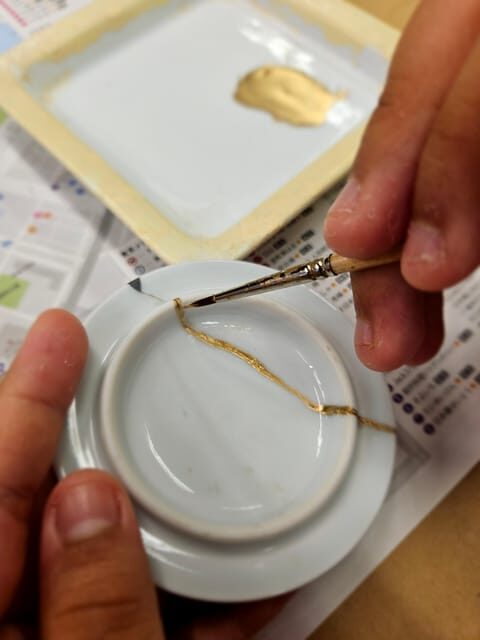
People consistently describe the workshop as “friendly,” “relaxing,” and “very fun,” emphasizing the opportunity to learn a traditional craft while creating something meaningful. Several reviews mention how enjoyable it was to see professional artists work alongside participants, inspiring confidence and curiosity.
The physical act of repairing with gold lacquer elevates the experience beyond a simple craft session. “You get to practice through the steps of kintsugi, replacing broken pieces and adhering them, using putty to fill gaps, and finally painting,” says one reviewer. It’s a genuine hands-on experience—no passive watching here.
More Great Tours NearbyThe Takeaway: Is It Worth It?
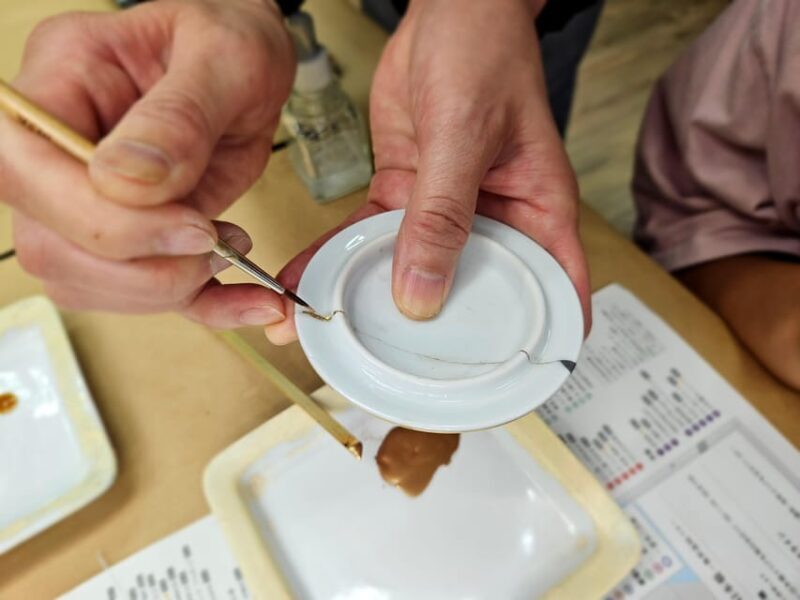
While the $156 price might seem steep at first glance, remember it includes all materials, expert guidance, and a tangible, handcrafted souvenir. It’s a chance to learn a meaningful art form that embodies patience, resilience, and beauty. Many find it a worthwhile investment in their cultural understanding and personal creativity.
The workshop also offers flexibility—just 1 to 1.5 hours long—making it perfect for travelers who want a memorable experience without dedicating a whole day. Plus, the location near Asakusa means you can easily combine it with other sightseeing, like visiting Senso-ji Temple or exploring Nakamise Street.
- Düsseldorf: Manga, mochi & more Düsseldorf’s Little Tokyo
- From Tokyo: Mt. Fuji Spanish & English Tour
- Downtown Los Angeles : Historic district & Little Tokyo
- Outdoor Escape Room in LA – Little Tokyo
- LA Little Tokyo to Olvera St Smartphone (App/GPS) Walking Tour
- 1-Day Mt Fuji and Hakone Sightseeing trip from Tokyo
Who Should Consider This Experience?
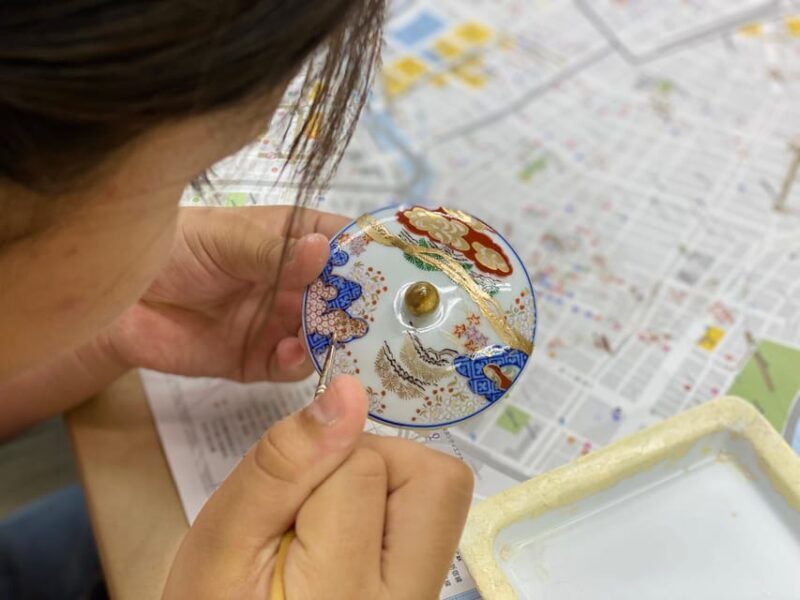
If you’re interested in Japanese culture, craftsmanship, or just in doing something a little different during your trip, this workshop suits you. It’s particularly appealing if you appreciate hands-on activities and want a souvenir that’s both beautiful and meaningful. The gentle, encouraging guidance makes it suitable for beginners, and the small group size ensures personalized attention.
This activity isn’t just about repairing pottery—it’s about embracing imperfection and finding beauty in the cracks. Perfect for art lovers, curious travelers, and those wanting to bring home a story as well as a craft.
Detailed Breakdown of the Experience
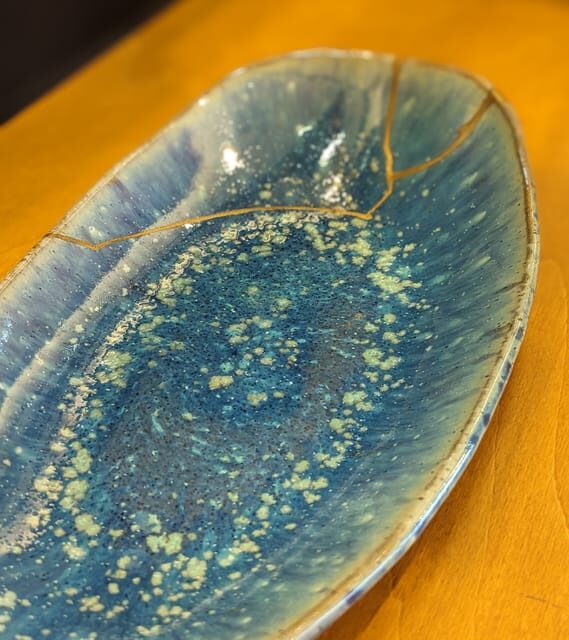
Location and Accessibility
The Nihonbashi Mutoh Main Store is located in central Tokyo, making it easy to reach from popular neighborhoods like Asakusa or Ginza. The proximity to major subway lines means you won’t have to navigate complicated routes, and the workshop’s schedule is flexible enough to fit into most itineraries.
Group Size and Atmosphere
Limited to eight participants, the small-group setting fosters a relaxed atmosphere where everyone can get individual attention. Several participants mention how the guides, often including a Japanese instructor and a translator, make the process enjoyable through friendly and clear communication.
Duration and Timing
At roughly 90 minutes, the workshop is concise yet comprehensive. Reviews confirm the experience starts promptly and finishes within the allotted time, making it easy to plan around other sightseeing activities. It’s ideal for those with tight schedules who still want a meaningful cultural experience.
The Crafting Process
The workshop guides you through every step: cleaning and preparing the broken ceramics, adhering the pieces with traditional glue, filling gaps with clay, sanding for smoothness, and finally applying gold lacquer to highlight the cracks. This step-by-step approach demystifies the process, revealing the craftsmanship behind Kintsugi.
The Final Product and Takeaway
Most participants leave with a repaired ceramic piece, often a bowl or small vessel, that they can display or use decoratively. Reviews consistently note how satisfying it is to see the cracks turn into a feature, not a flaw. Some even mention that their repaired items are suitable for holding dry food items, although the primary purpose is decorative.
Additional Offerings and Shopping
The shop also sells finished Kintsugi works, lacquerware, and affordable gifts like chopsticks and bento boxes. This provides an opportunity to browse and purchase authentic Japanese crafts, adding a little extra value to your visit.
Summary
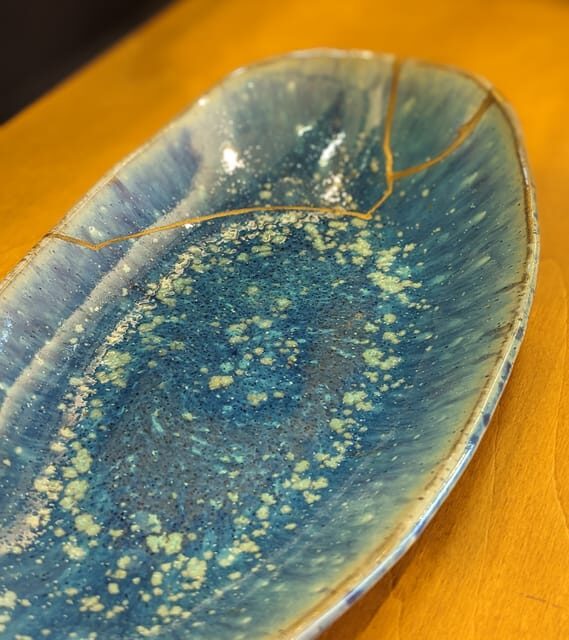
To sum it up, the Tokyo Kintsugi Art Repair Workshop offers visitors a unique chance to connect with Japanese tradition on a personal level. It’s more than just a craft class; it’s an experience that teaches patience, resilience, and the beauty of imperfections. The guided instruction, all materials included, and the chance to take home your own repaired piece make it a well-rounded activity for art lovers and culture seekers alike.
While the price might seem high, the quality of instruction, intimate setting, and meaningful souvenir justify the cost. Whether you’re a curious traveler, an art enthusiast, or someone looking for a memorable story to tell, this workshop adds a thoughtful, hands-on element to your Tokyo visit.
FAQ

Is this workshop suitable for children?
Yes, but only for those over age 13. Younger children might find the delicate process challenging or less engaging.
Do I need to bring anything?
No, all materials are provided, including the ceramics for repair. Just wear comfortable clothes you’re okay with getting a little paint or glue on.
How long does the workshop last?
Typically around 1.5 hours, making it easy to fit into a busy sightseeing day.
Can I bring my own ceramic?
Yes, if it’s a ceramic vessel under 15cm in height and diameter with 1-2 cracks. However, very large or extensively chipped items might not be repairable within the time.
What if I can’t finish my repair during the session?
The workshop ends promptly at the scheduled time. For larger or more complex repairs, you might need extra time, which isn’t usually available on the day.
Is there an option for group bookings?
Yes, the groups are small, limited to 8 participants, perfect for a more personalized experience.
What is the English level of the guides?
All guides communicate fluently in English, ensuring clear instructions and a relaxed atmosphere.
Can I return home with my repaired piece?
Yes, the finished item is carefully boxed and can be taken home immediately or after curing. It’s primarily for decorative use.
Are there any other activities nearby worth combining?
Absolutely. The workshop’s central location makes it easy to visit nearby sites like Senso-ji Temple or explore Nakamise Street, enriching your cultural experience.
If you’re craving a memorable, culturally rich activity that combines craft, philosophy, and fun, the Kintsugi Art Repair Workshop in Tokyo is a smart pick. It’s especially rewarding for those who want to understand and participate in Japan’s artistic traditions firsthand.
You can check availability for your dates here:More Workshops & Classes in Tokyo
- Tokyo: Photography Masterclass – Private Photo Lesson
- Tokyo: Edo Kiriko Traditional Glass Carving Class
- Tokyo: Cute Bento Cooking Class!
- Tokyo: Japanese Calligraphy Lesson with Skilled Instructor
- Sushi Making Class at a Real Tuna Dealers Shop in Shibuya
- Tokyo: Making a Lantern Workshop in Asakusa with a Craftsman
More Tour Reviews in Tokyo
- Breakfast Ramen Tour in Shinjuku, Tokyo
- Tokyo: Japanese anime stores with ramen lunch in Shibuya
- Tokyo: Private Tour and Traditional Performance with Dinner
- Tokyo: Challenge Sumo Wrestlers and Enjoy Meal
- Tokyo: East Garden of the Imperial Palace with History Guide
- Tokyo: Guided Tour of Japan’s Largest Fish Market in Tsukiji
More Tokyo experiences we've covered
- Tokyo: Nikko Private Day Tour with English Speaking Driver
- Tokyo: Private Half-Day Tour by Car with Local Guide
- Breakfast Ramen Tour in Shinjuku, Tokyo
- Tokyo: Japanese anime stores with ramen lunch in Shibuya
- Tokyo : Hakone Onsen Nature & Art Lake Ashi private day tour
- Tokyo: Private Tour and Traditional Performance with Dinner
- Tokyo: Challenge Sumo Wrestlers and Enjoy Meal
- Tokyo: Asakusa Waiking Tour with University Students
- Tokyo: East Garden of the Imperial Palace with History Guide
- Tokyo: Guided Tour of Japan’s Largest Fish Market in Tsukiji
- Tokyo: Legoland Discovery Center Admission Ticket
- Tokyo: Japanese Culture and Traditional Craft Experience
